Research on the Biomechanical Characteristics of Salted Wakame (Undaria pinnatifida)
Abstract
:1. Introduction
2. Materials and Methods
2.1. Materials
2.2. Instruments
2.3. Method
2.3.1. Tensile Test
2.3.2. Compression Test
2.3.3. Shear Test
2.3.4. Stem–Leaf Separation Test
2.3.5. Friction Characteristic Test
3. Results and Discussion
3.1. Analysis of Tensile Properties of Wakame
3.2. Analysis on Compressive Properties of Wakame
3.3. Analysis of Shear Resistance Characteristics of Wakame
3.4. Analysis of Stem and Leaf Separation Characteristics of Wakame
3.5. Analysis of Frictional Characteristics of Wakame
3.6. Correlation Analysis of Mechanical Properties of Wakame
4. Conclusions
Author Contributions
Funding
Data Availability Statement
Conflicts of Interest
References
- Leng, L.; Zou, H.; Wang, Y.; Yu, C.; Qi, H. Seaweed Slurry Improved Gel Properties and Enhanced Protein Structure of Silver Carp (Hypophthalmichthys molitrix) Surimi. Foods 2022, 11, 3115. [Google Scholar] [CrossRef]
- Synytsya, A.; Kim, W.J.; Kim, S.M.; Pohl, R.; Synytsya, A.; Kvasnička, F.; Čopíková, J.; Park, Y.I. Structure and antitumour activity of fucoidan isolated from sporophyll of Korean brown seaweed Undaria pinnatifida. Carbohydr. Polym. 2010, 81, 41–48. [Google Scholar] [CrossRef]
- Suetsuna, K.; Maekawa, K.; Chen, J.-R. Antihypertensive effects of Undaria pinnatifida (wakame) peptide on blood pressure in spontaneously hypertensive rats. J. Nutr. Biochem. 2004, 15, 267–272. [Google Scholar] [CrossRef] [PubMed]
- Teas, J.; Zhang, Q.; Kennedy, V. Seaweed as an anticarcinogenic agent in breast cancer. Cancer Res. 2007, 67, 4988. [Google Scholar]
- Boo, H.-J.; Hyun, J.-H.; Kim, S.-C.; Kang, J.-I.; Kim, M.-K.; Kim, S.-Y.; Cho, H.; Yoo, E.-S.; Kang, H.-K. Fucoidan from Undaria pinnatifida Induces Apoptosis in A549 Human Lung Carcinoma Cells. Phytother. Res. 2011, 25, 1082–1086. [Google Scholar] [CrossRef] [PubMed]
- Department of Fisheries, Ministry of Agriculture. China Fishery Statistical Yearbook; China Agricultural Publishing House: Beijing, China, 2022. [Google Scholar]
- Hasegawa, K.; Suzuki, S. Work Analysis of Harvesting and Salt-Preserved Wakame Seaweed (Undaria pinnatifida) Processing; Technical Report of National Research Institute of Fisheries Engineering; Food and Agriculture Organization of the United Nations: Rome, Italy, 2005. [Google Scholar]
- Yimit, A.; Takagi, M.; Hagihara, Y.; Miyoshi, T. A method of determining cut position of automatic stem removal system for salted wakame, Agricultural Engineering International. CIGR J. 2015, 17, 188–196. [Google Scholar]
- Hasegawa, K. Workload Analysis of Wakame Seaweed Harvesting at Sanriku District. Fish. Eng. 2006, 43, 179–184. [Google Scholar]
- Solana, V.P.; Makte, M.; Dellatorre, F.G. Innovation on Marine Fishing Resources from Patagonia: Harvest and Processing Undaria pinnatifida for Wakame Production in Puerto Madryn; Congreso Argentino de Ingeniería Industrial: Chubut, Argentina, 2014. [Google Scholar]
- Yinyan, S.; Man, C.; Xiaochan, W.; Yongnian, Z.; Odhiambo, M.O. Experiment and analysis on mechanical properties of artemisia selengensis stalk. Int. J. Agric. Biol. Eng. 2017, 10, 10. [Google Scholar]
- Zhao, C.; Zhang, F.; Cao, Z. Experiment on stalk mechanical properties of legume forage and grasses. Trans. Chin. Soc. Agric. Eng. 2009, 25, 122–126. [Google Scholar]
- Song, J. Effects of Experimental Conditions on Texture Profile Analysis (TPA) of Chicken Sausage. Food Sci. 2009, 30, 54–58. [Google Scholar]
- Xiaodong, L.; Youwei, Z.; Xiaofei, L.; Mingfu, Z.; Xinzheng, L.; Shaojun, P. Phylogenetic Analysis of Algal Pests of the Economic Alga Undaria pinnatifida in the Farming Region of Dalian. Prog. Fish. Sci. 2021, 42, 13. [Google Scholar] [CrossRef]
- Liu, D.; Xiao, H.; Jin, Y.; Cao, G.; Liu, M. Mechanical properties test and analysis on the stalks of Chinese little greens. Int. Agric. Eng. J. 2018, 27, 38–43. [Google Scholar]
- Li, Z.; Fu, J.; Luo, X. Tensile Properties and Fracture Mechanisms of Corn Bract for Corn Peeling Device Design. Agriculture 2021, 11, 796. [Google Scholar] [CrossRef]
- Lu, W.; Li, X.; Zhang, G.; Tang, J.; Ni, S.; Zhang, H.; Zhang, Q.; Zhai, Y.; Mu, G. Research on Biomechanical Properties of Laver (Porphyra yezoensis Ueda) for Mechanical Harvesting and Postharvest Transportation. AgriEngineering 2022, 4, 48–66. [Google Scholar] [CrossRef]
- Jia, T.; Bing, C.; Jinnan, J.; Caihua, L.; Li, Z.; Niyuan, M. Biomechanical characteristics of root systems of Hedysarum scoparium and Salix psammophila. Trans. Chin. Soc. Agric. Eng. 2014, 30, 7. [Google Scholar]
- Yinghui, M.; Song, G.; Zhiyu, M. Experimental analysis on biomechanical properties of cucurbits grafted seedlings. Trans. CSAE 2012, 28, 6. [Google Scholar]
- Xiang, L.; Ping, Z.; Weixin, X.; Shaohui, Z.; Xing, G.; Li, L. Effect of Experimental Conditions in TPA Test on Melon Textural Property. China Veg. 2015, 2015, 38–44. [Google Scholar]
- Yong, J.; Yunhu, W.; Yanhong, B.; Liniln, H.; Xinqi, Z.; Rui, S. Analysis on TPA Textual Characteristics of Various Species of Figs. Shandong Agric. Sci. 2018, 50, 52–56. [Google Scholar]
- Liangjun, W.; Zhou, Y.; Tiansheng, H.; Jieli, D.; Weizu, W.; Liuyi, W.; Guangneng, T. Experimental study on mechanical properties of litchi branches. Trans. Chin. Soc. Agric. Eng. 2012, 28, 68–73. [Google Scholar]
- Mengyue, Z.; Yong, Z.; Guozhong, Z.; Dezhu, L.; Huibin, K.; Hang, C.; Chuangchuang, F. Mechanical properties of compression and shear of taro. J. Gansu Agric. Univ. 2020, 55, 206–221. [Google Scholar]
- Ze, W.; Ming, Z.; Dongmei, S.; Xiulian, L.; Lin, D.; Xia, Y.; Qinxian, J. Experimental Study Concerning the Effects of Profile Morphology of Intestine on the Frictional Characteristics. Tribology 2014, 34, 193–197. [Google Scholar]
- Lili, H.; Haibo, M.; Yishui, T.; Lixin, Z.; Shulin, H. Experimental study on physical property of smashed crop straw. Trans. Chin. Soc. Agric. Eng. 2012, 28, 7. [Google Scholar]
- Tianchi, C. Study on Mechanical Properties of Kelp and Design of Mechanisms for Knotting Kelp. Master’s Thesis, Southeast University, Dhaka, Bangladesh, 2018. [Google Scholar]
- Yumei, L.; Shouqiang, L.; Shilong, T.; Junzhou, W. Texture parameters of potato tubers with texture profile analysis method. Sci. Technol. Food Ind. 2016, 37, 92–96. [Google Scholar]
- Chattopadhyay, P.S.; Pandey, K.P. Mechanical Properties of Sorghum Stalk in relation to Quasi-static Deformation. J. Agric. Eng. Res. 1999, 73, 199–206. [Google Scholar] [CrossRef]
- Zhong, X. Cutting Mechanical Characteristics and Simulation Analysis of Cassava Stalk. Ph.D. Thesis, Huazhong Agricultural University, Wuhan, China, 2018. [Google Scholar]
- Fuhrmann, P.; Aguayo-Mendoza, M.; Jansen, B.; Stieger, M.; Scholten, E. Characterisation of friction behaviour of intact soft solid foods and food boli. Food Hydrocoll. 2020, 100, 105441. [Google Scholar] [CrossRef]
- Zhifeng, Y.; Xingwang, C.; Shenglong, S.; Donghui, C.; Zhiqin, W.; Yunhai, M. Tribological Properties of Cyclina sinensis Shell Cuticle. Trans. Chin. Soc. Agric. Mach. 2012, 43, 339–343. [Google Scholar]
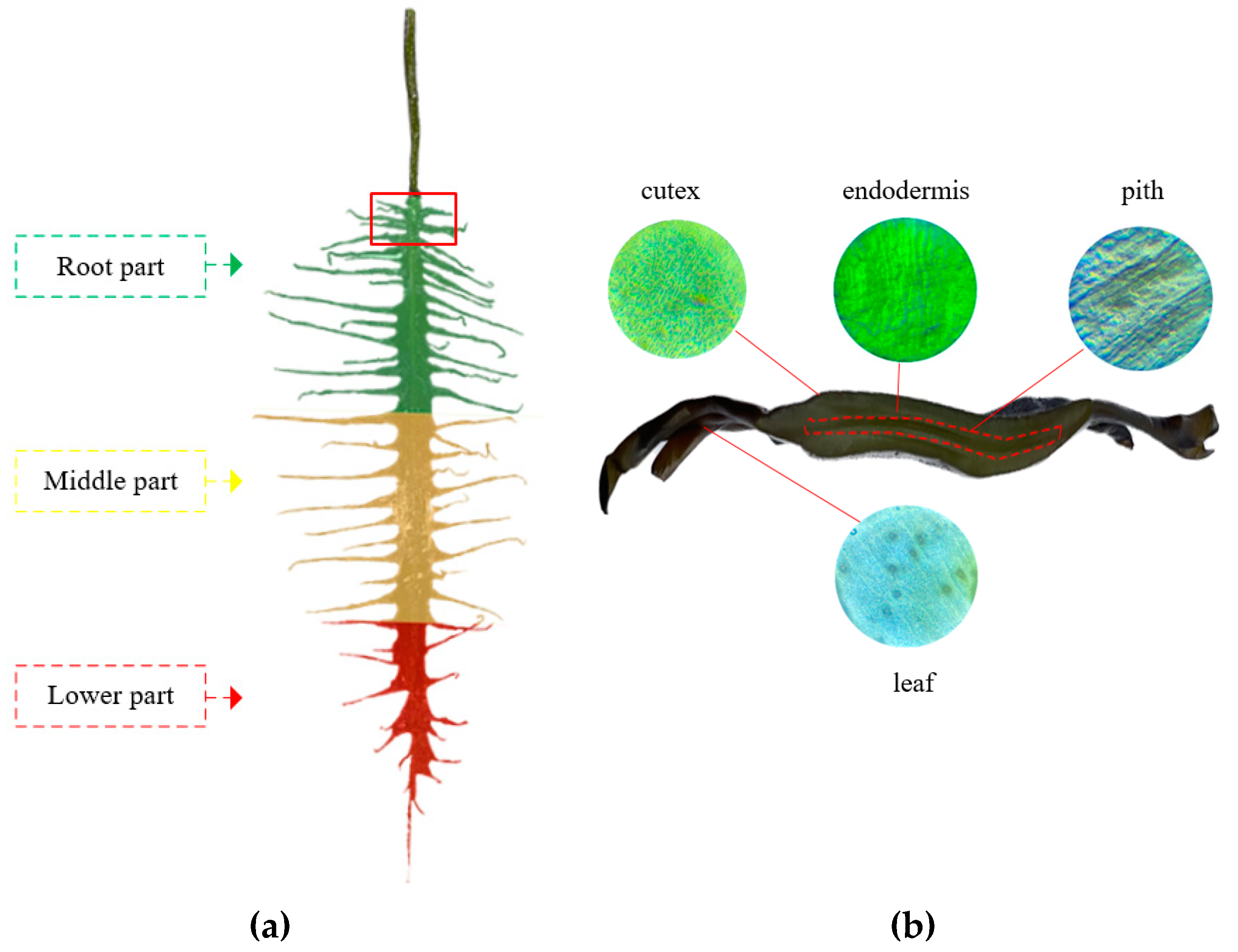






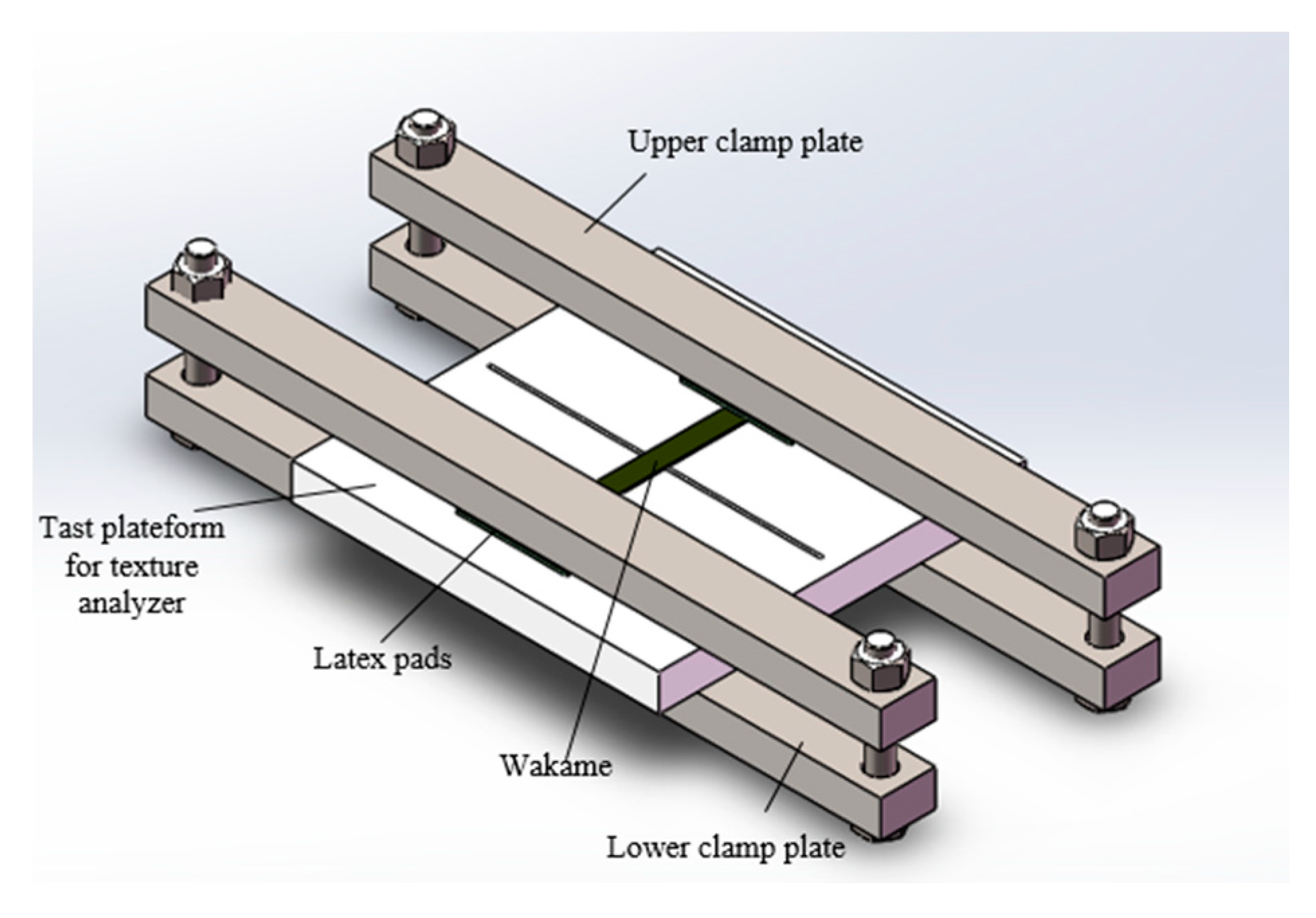

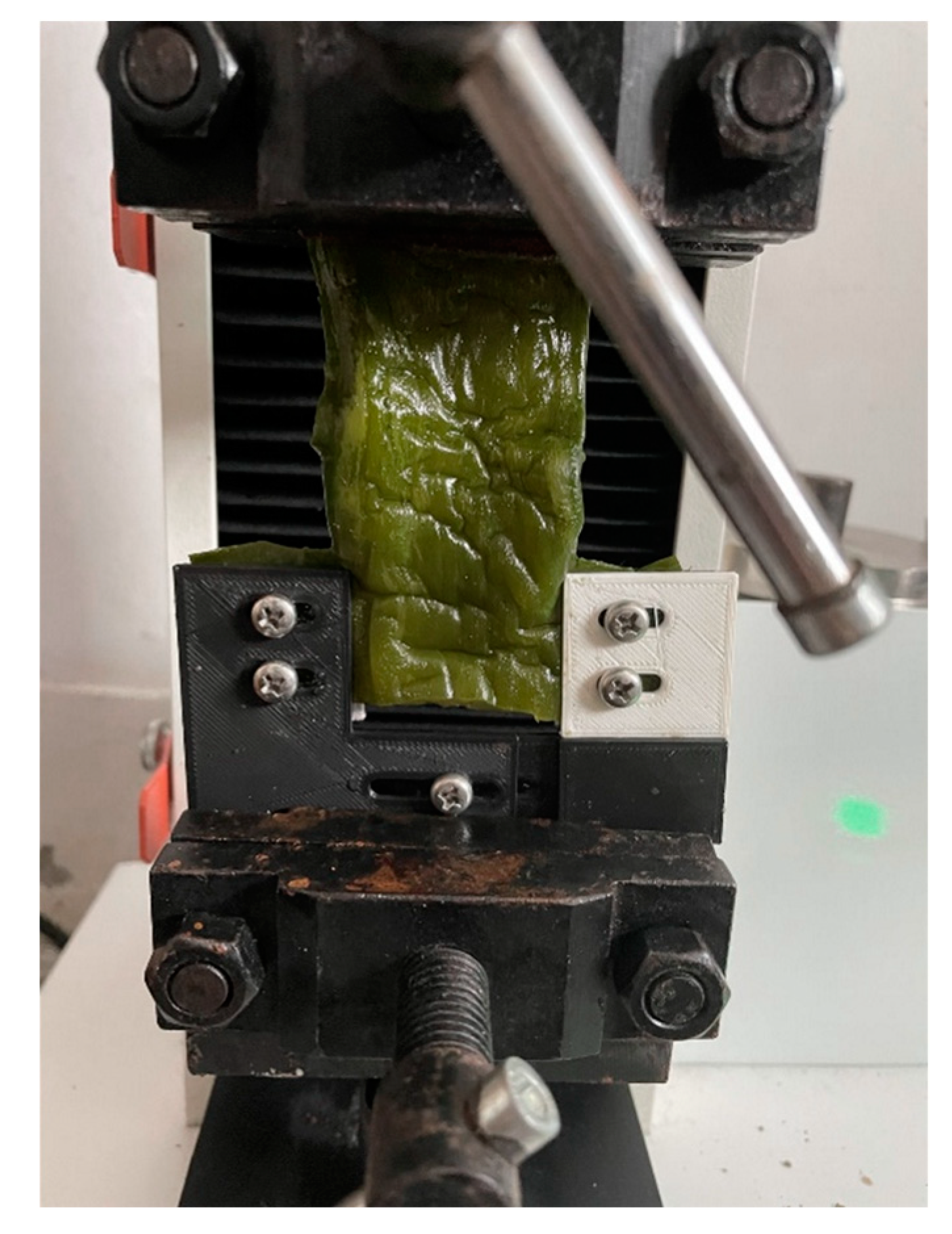
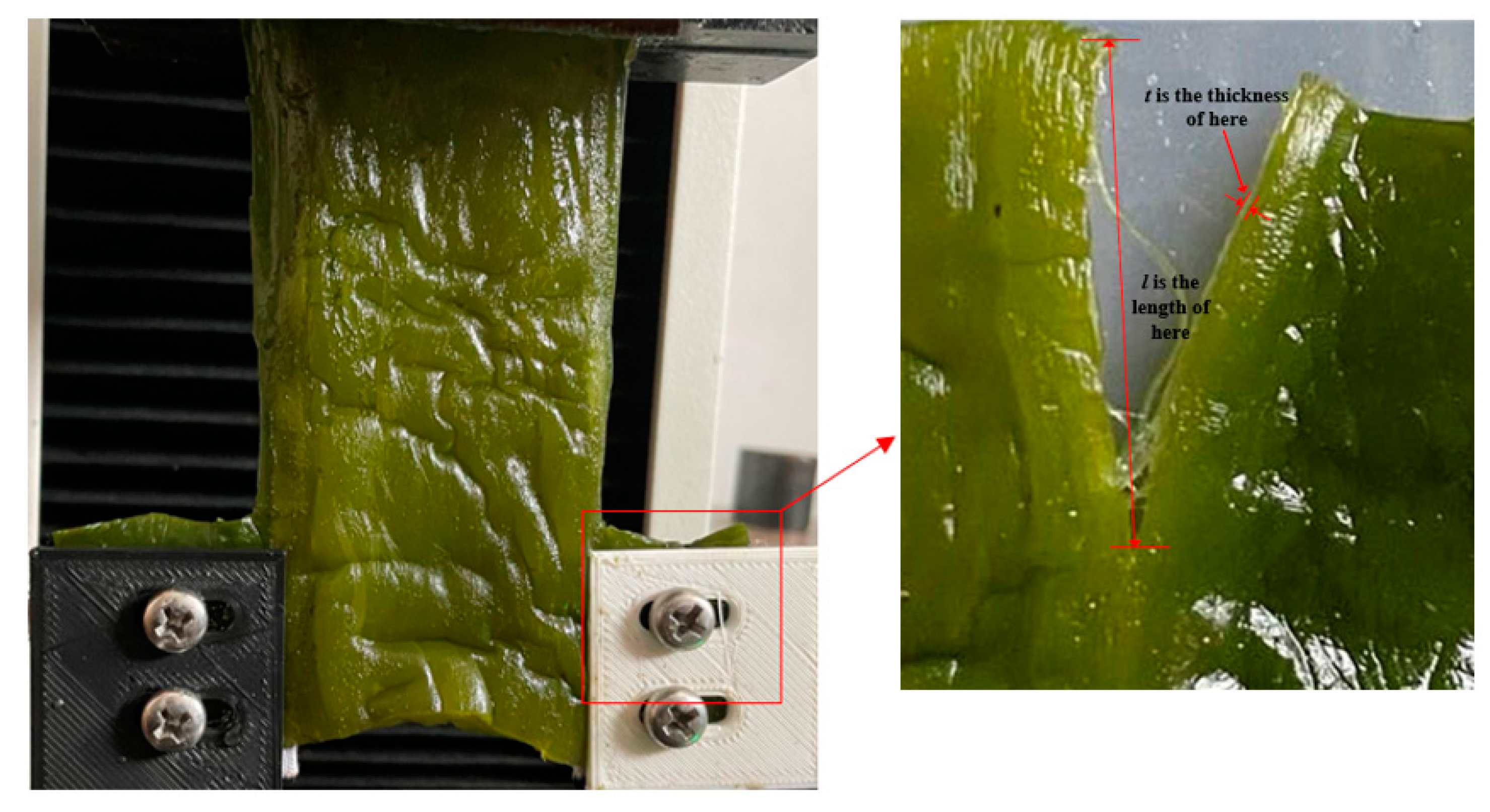


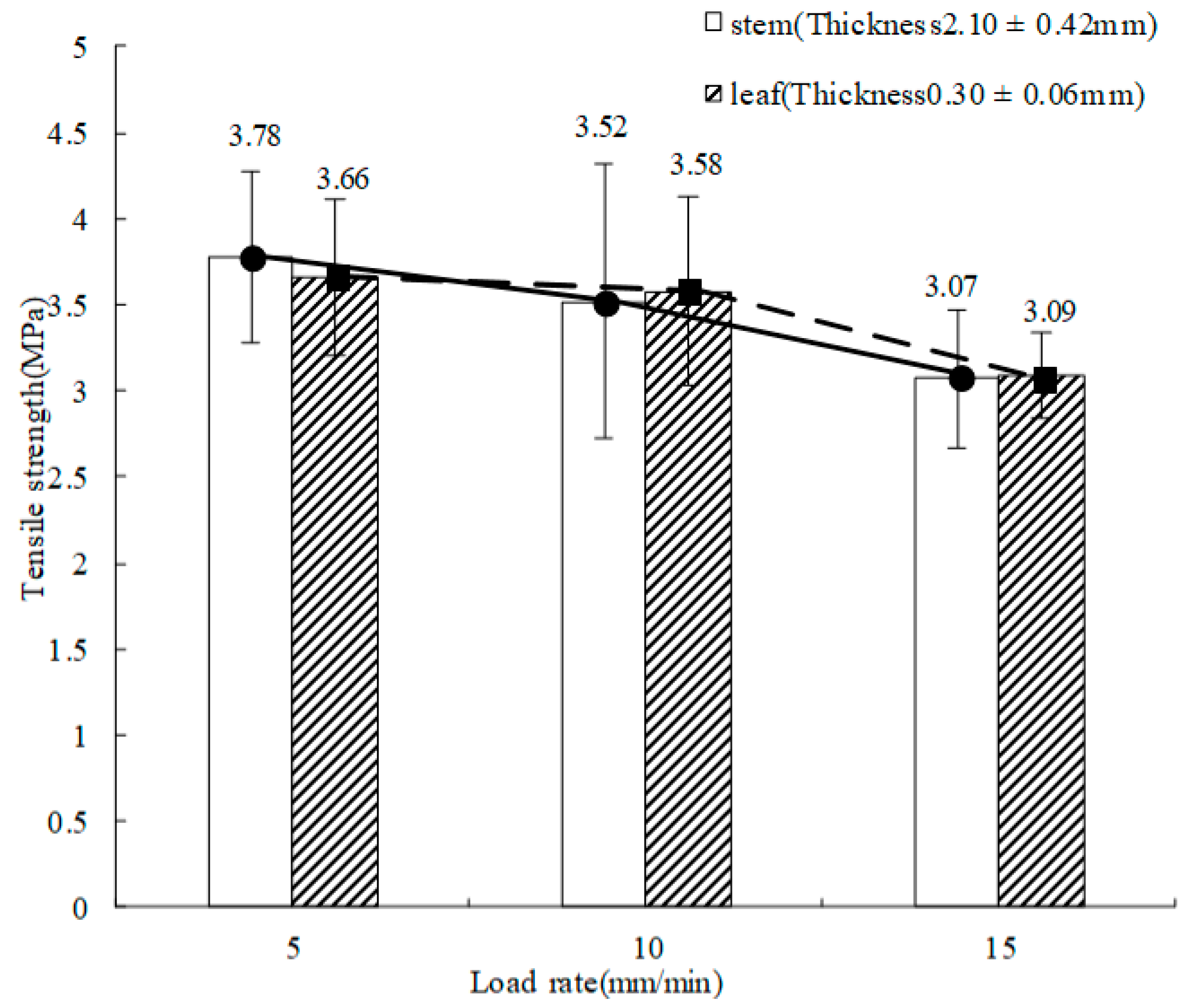
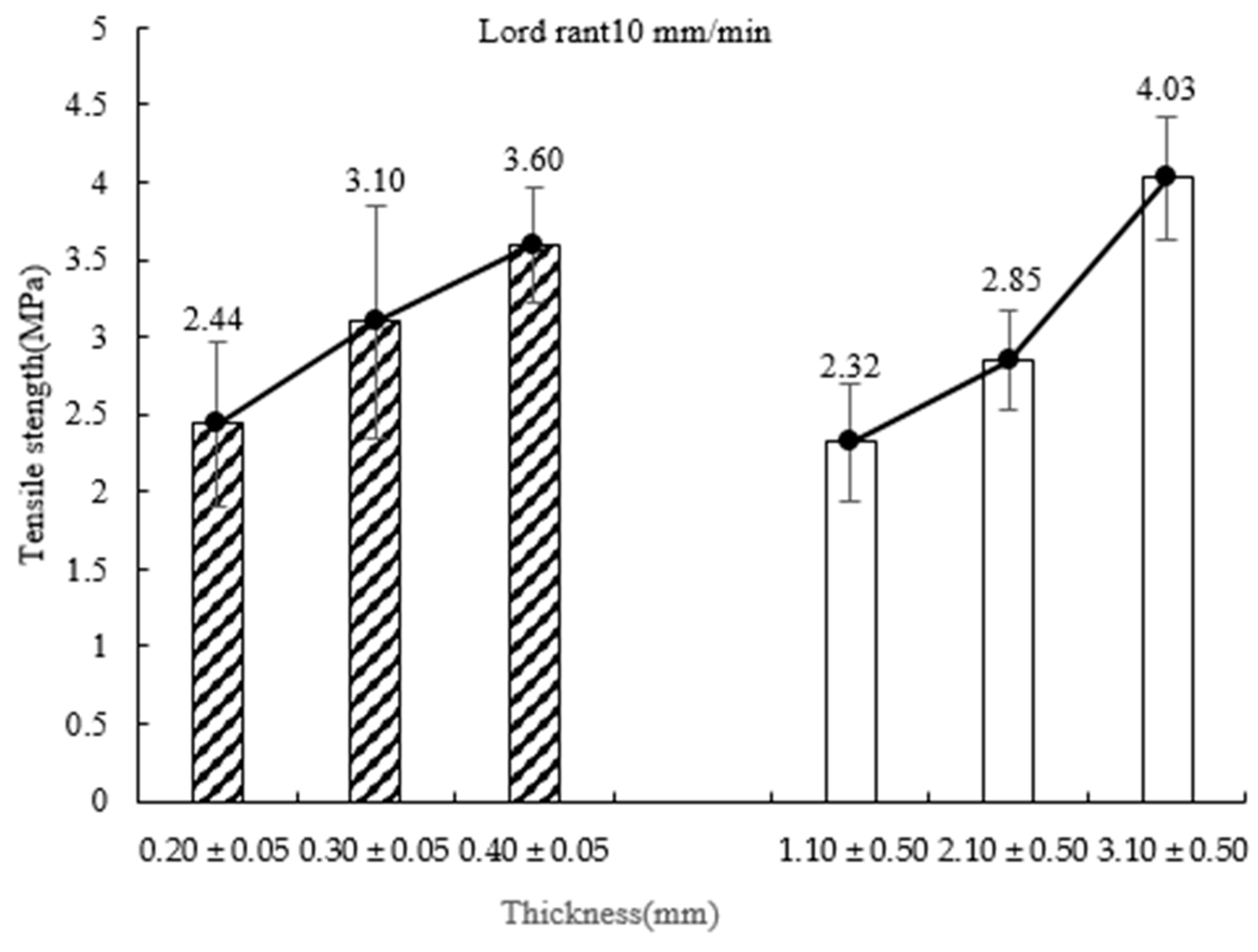


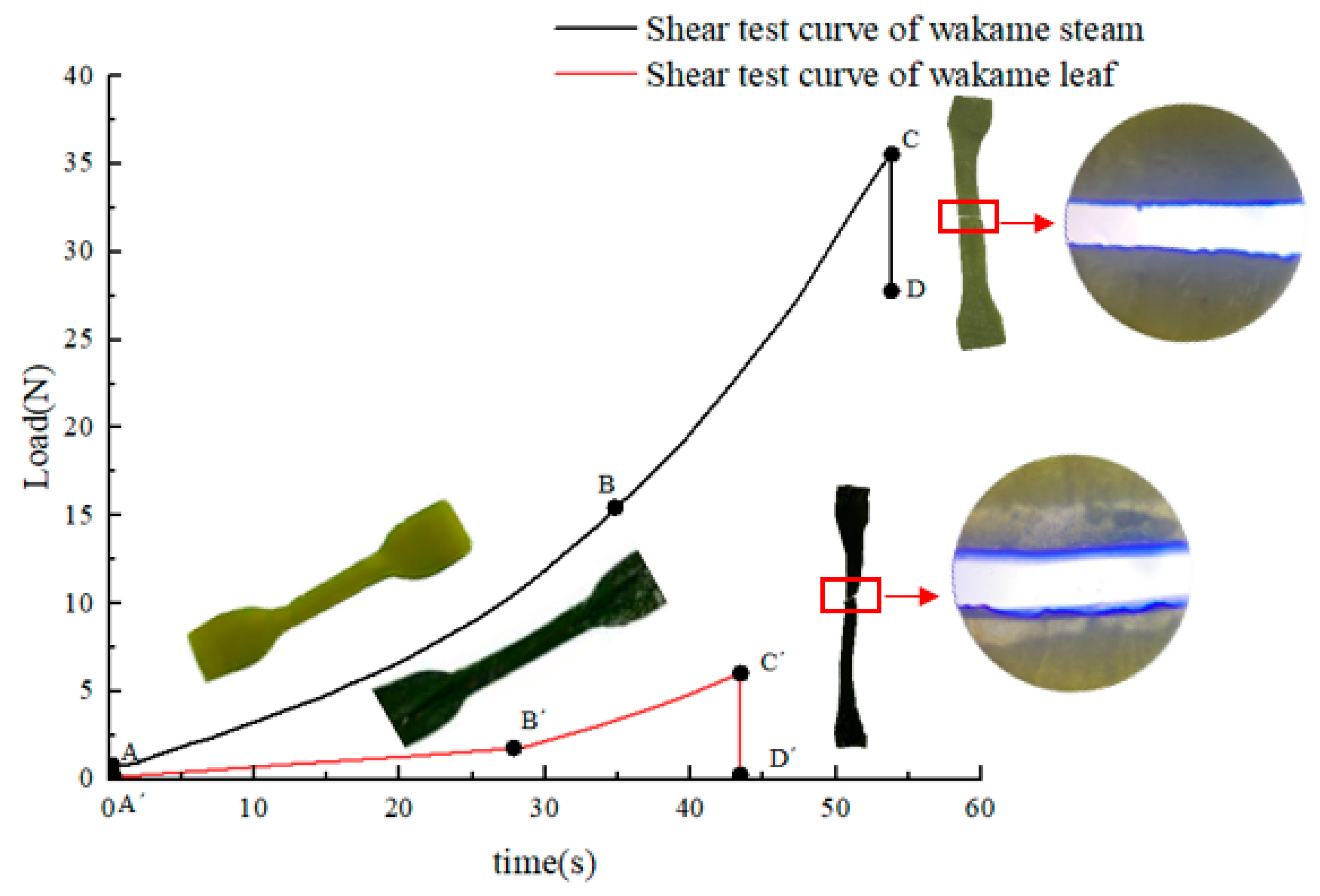
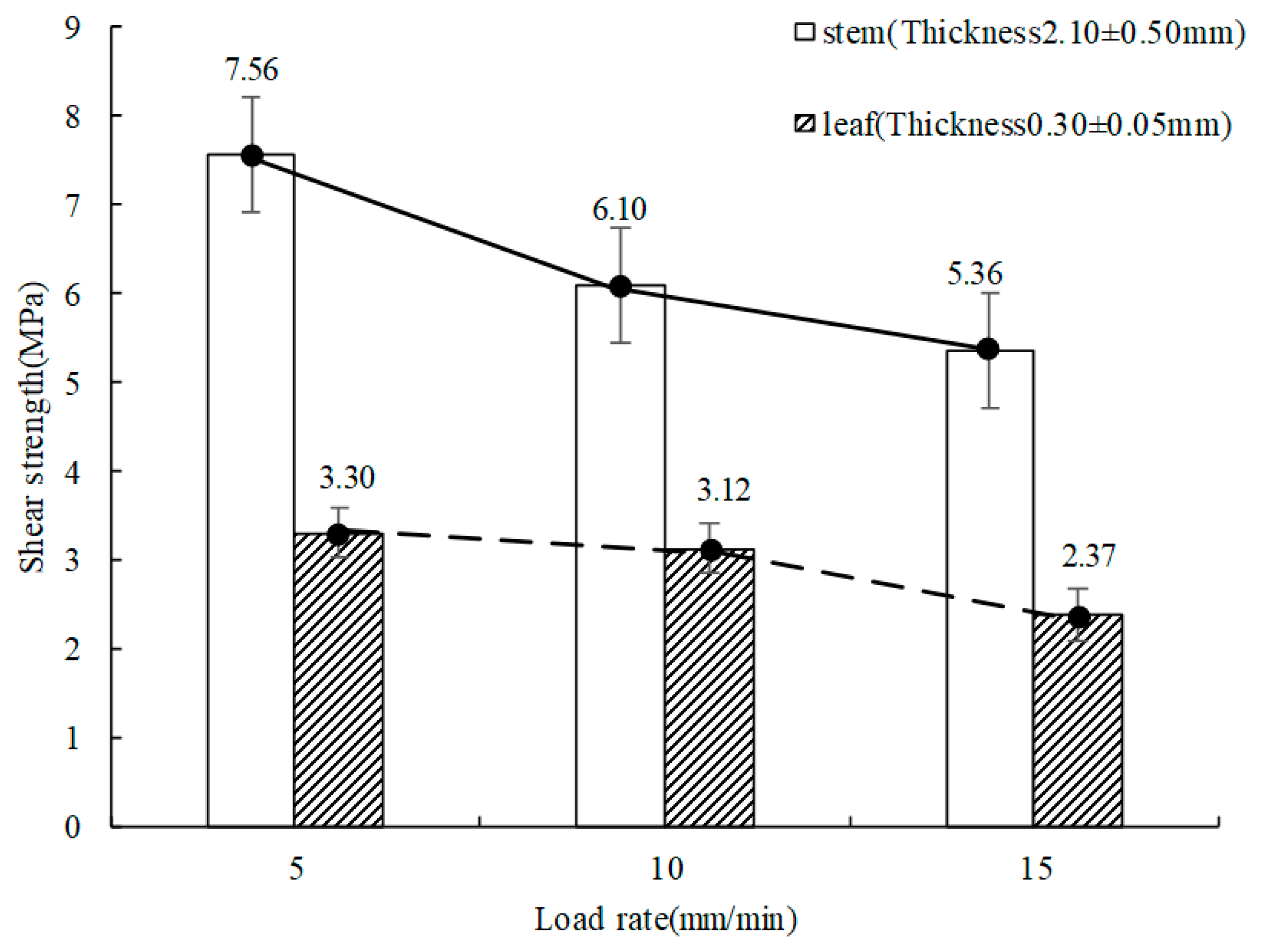
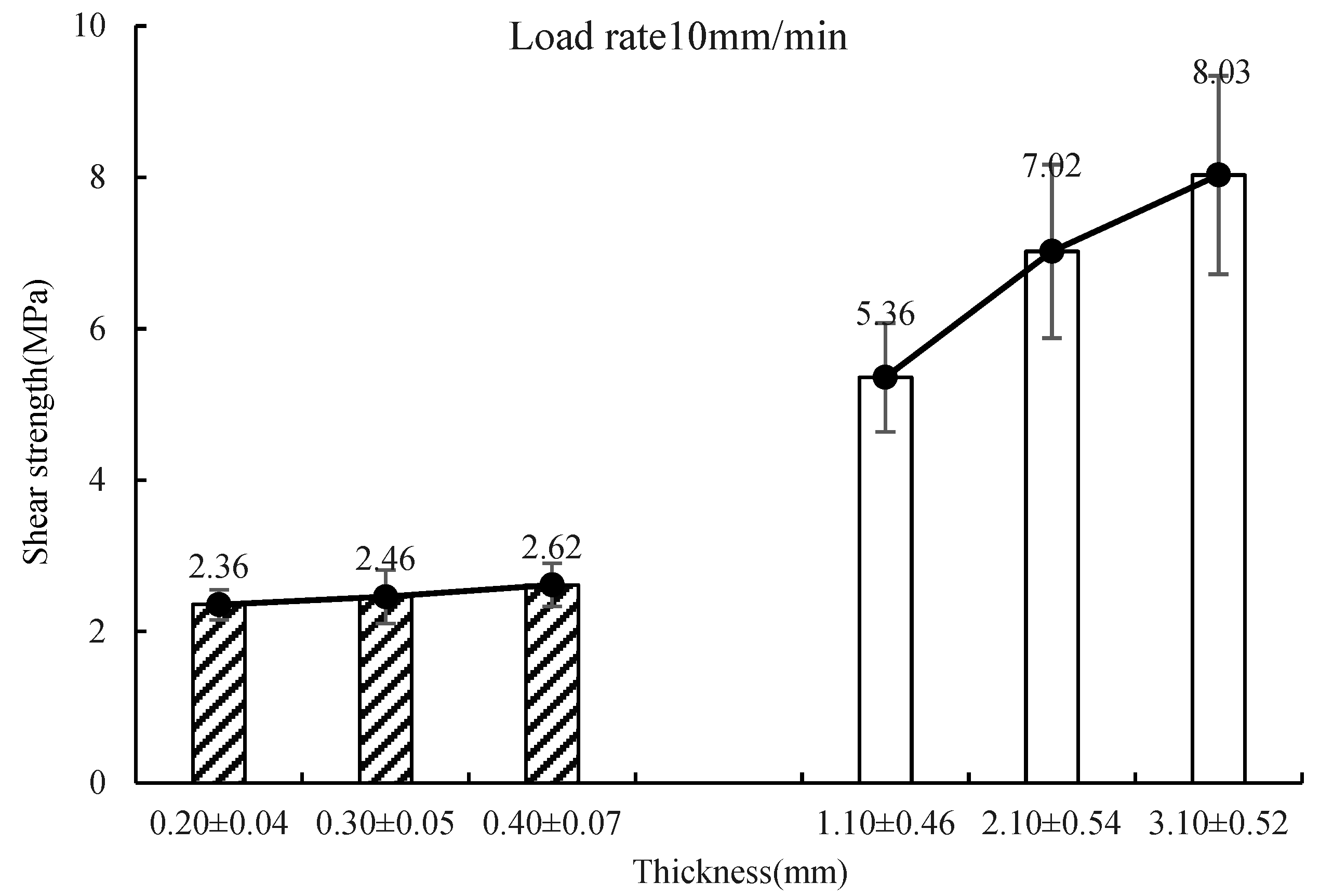

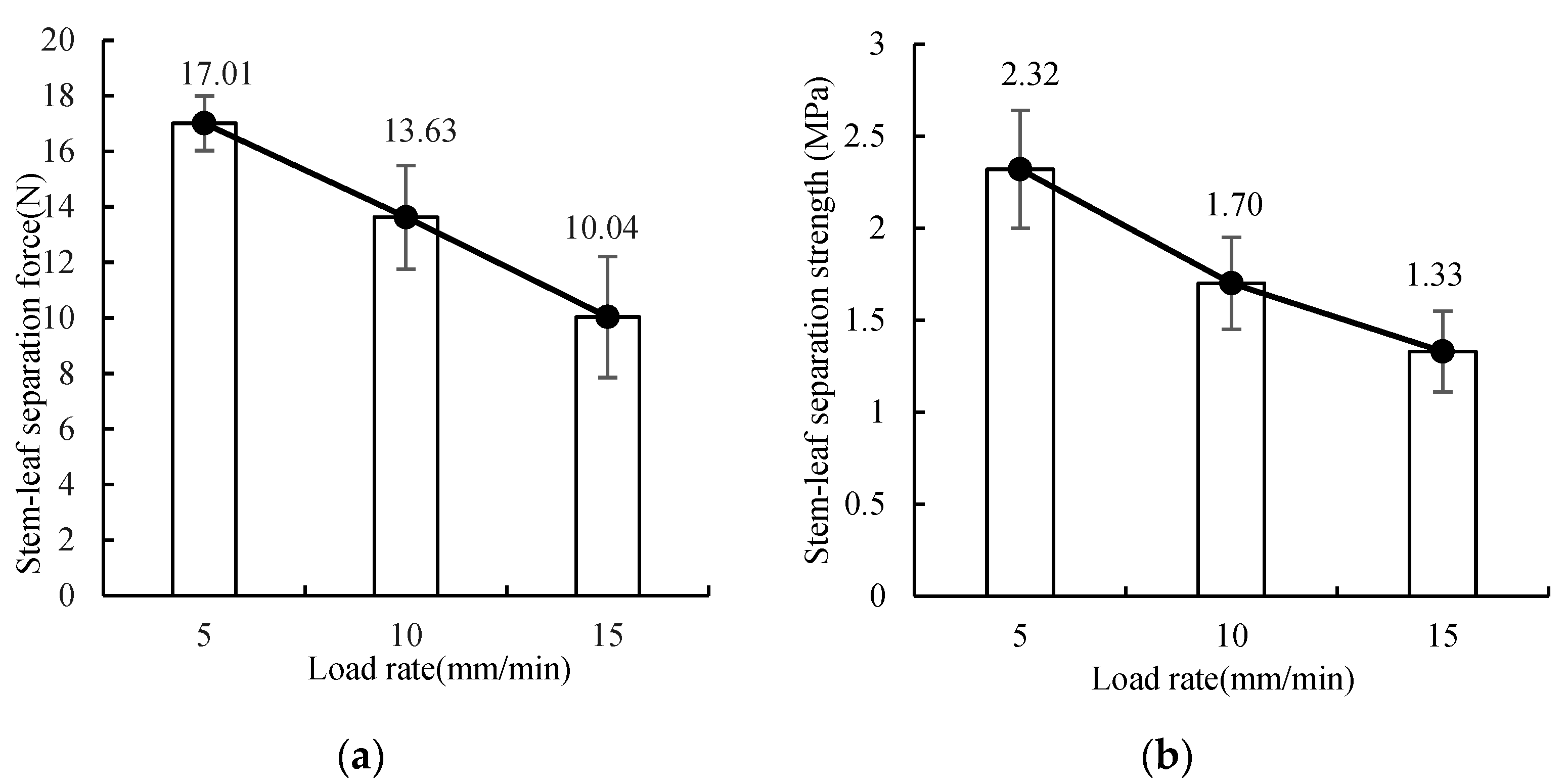

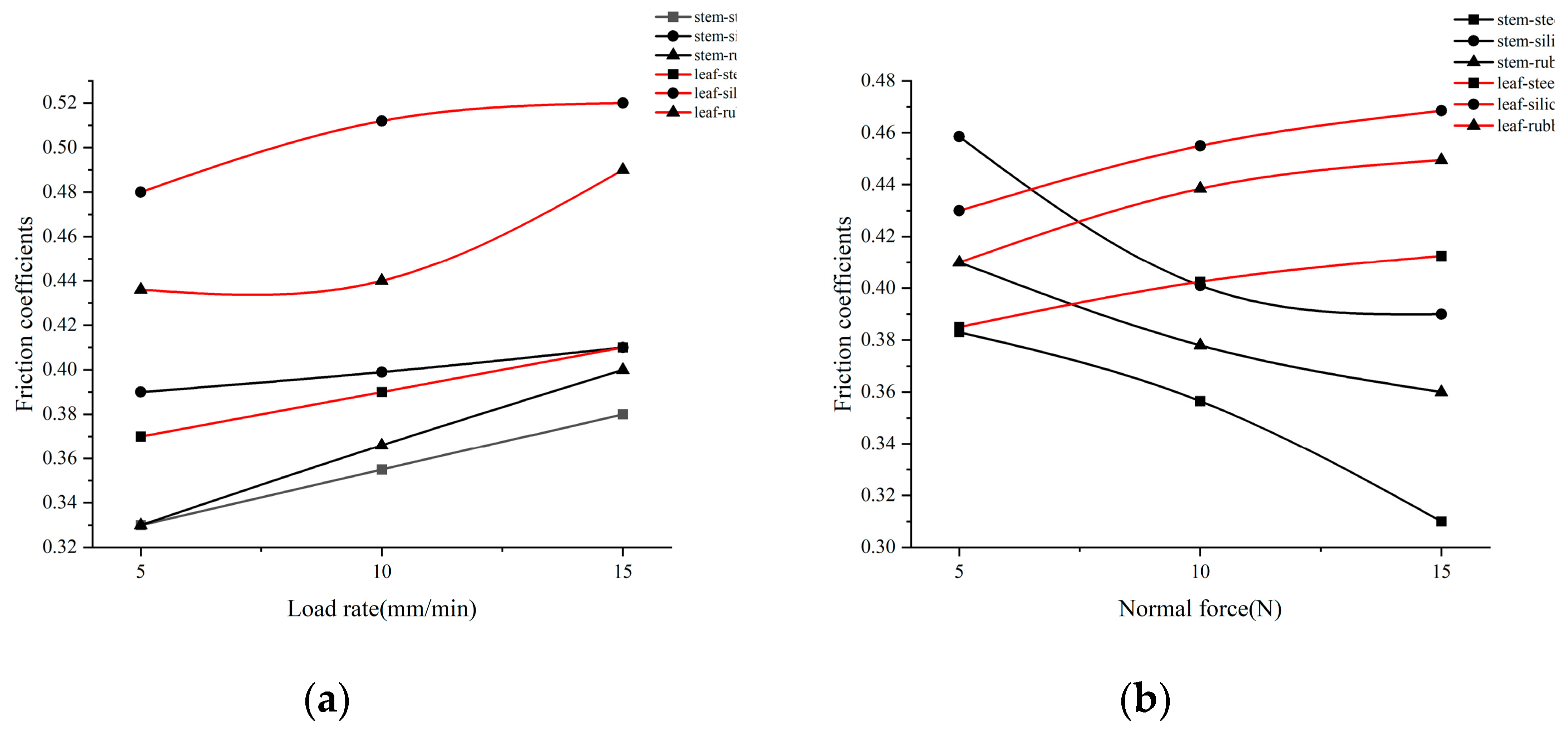

Disclaimer/Publisher’s Note: The statements, opinions and data contained in all publications are solely those of the individual author(s) and contributor(s) and not of MDPI and/or the editor(s). MDPI and/or the editor(s) disclaim responsibility for any injury to people or property resulting from any ideas, methods, instructions or products referred to in the content. |
© 2023 by the authors. Licensee MDPI, Basel, Switzerland. This article is an open access article distributed under the terms and conditions of the Creative Commons Attribution (CC BY) license (https://creativecommons.org/licenses/by/4.0/).
Share and Cite
Zhang, H.; Huang, W.; Kang, H.; Wu, S.; Li, X. Research on the Biomechanical Characteristics of Salted Wakame (Undaria pinnatifida). Processes 2023, 11, 552. https://doi.org/10.3390/pr11020552
Zhang H, Huang W, Kang H, Wu S, Li X. Research on the Biomechanical Characteristics of Salted Wakame (Undaria pinnatifida). Processes. 2023; 11(2):552. https://doi.org/10.3390/pr11020552
Chicago/Turabian StyleZhang, Hanbing, Weirong Huang, Huanyu Kang, Shuqiao Wu, and Xiuchen Li. 2023. "Research on the Biomechanical Characteristics of Salted Wakame (Undaria pinnatifida)" Processes 11, no. 2: 552. https://doi.org/10.3390/pr11020552
APA StyleZhang, H., Huang, W., Kang, H., Wu, S., & Li, X. (2023). Research on the Biomechanical Characteristics of Salted Wakame (Undaria pinnatifida). Processes, 11(2), 552. https://doi.org/10.3390/pr11020552




